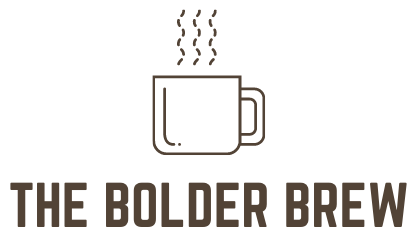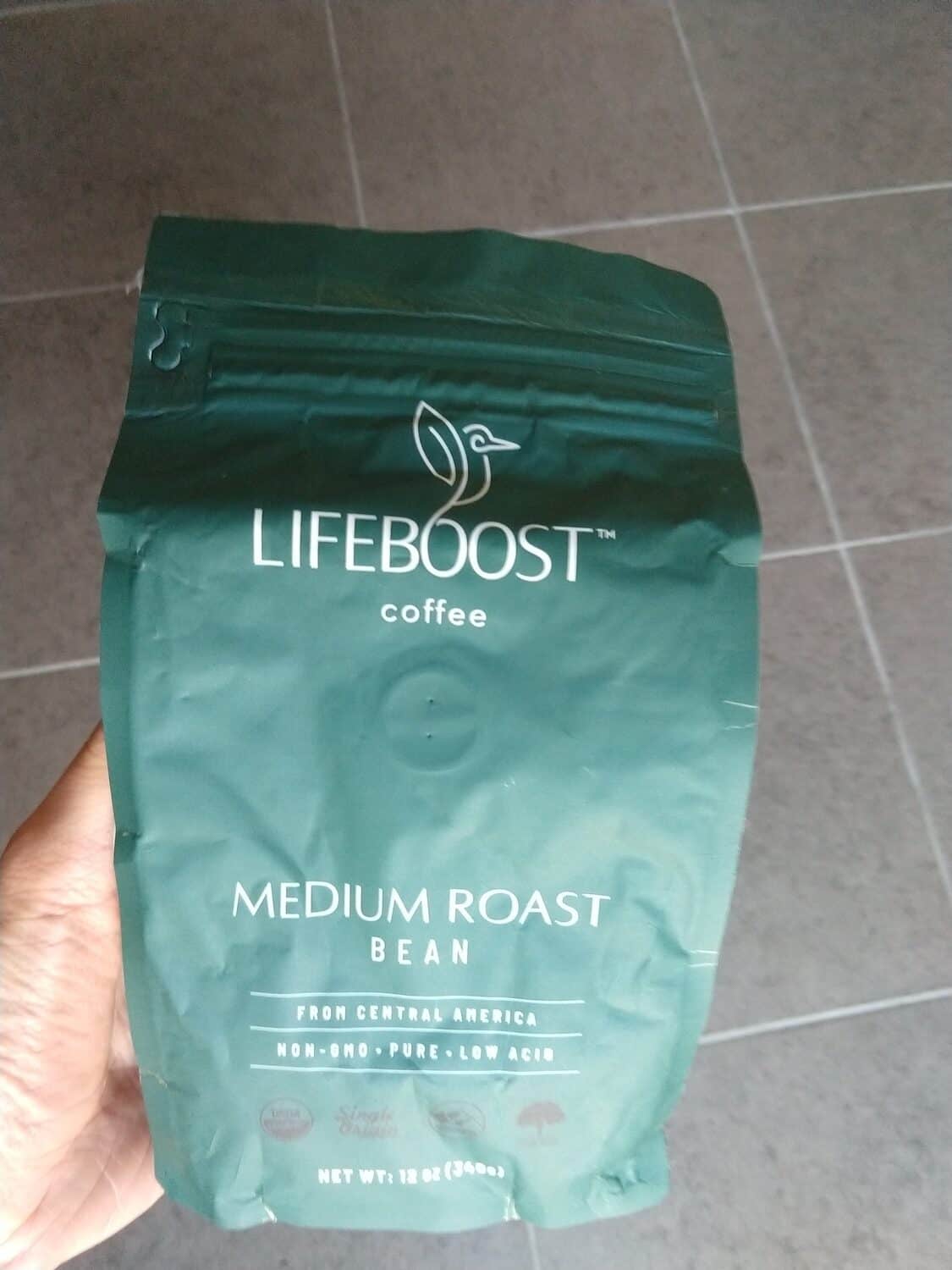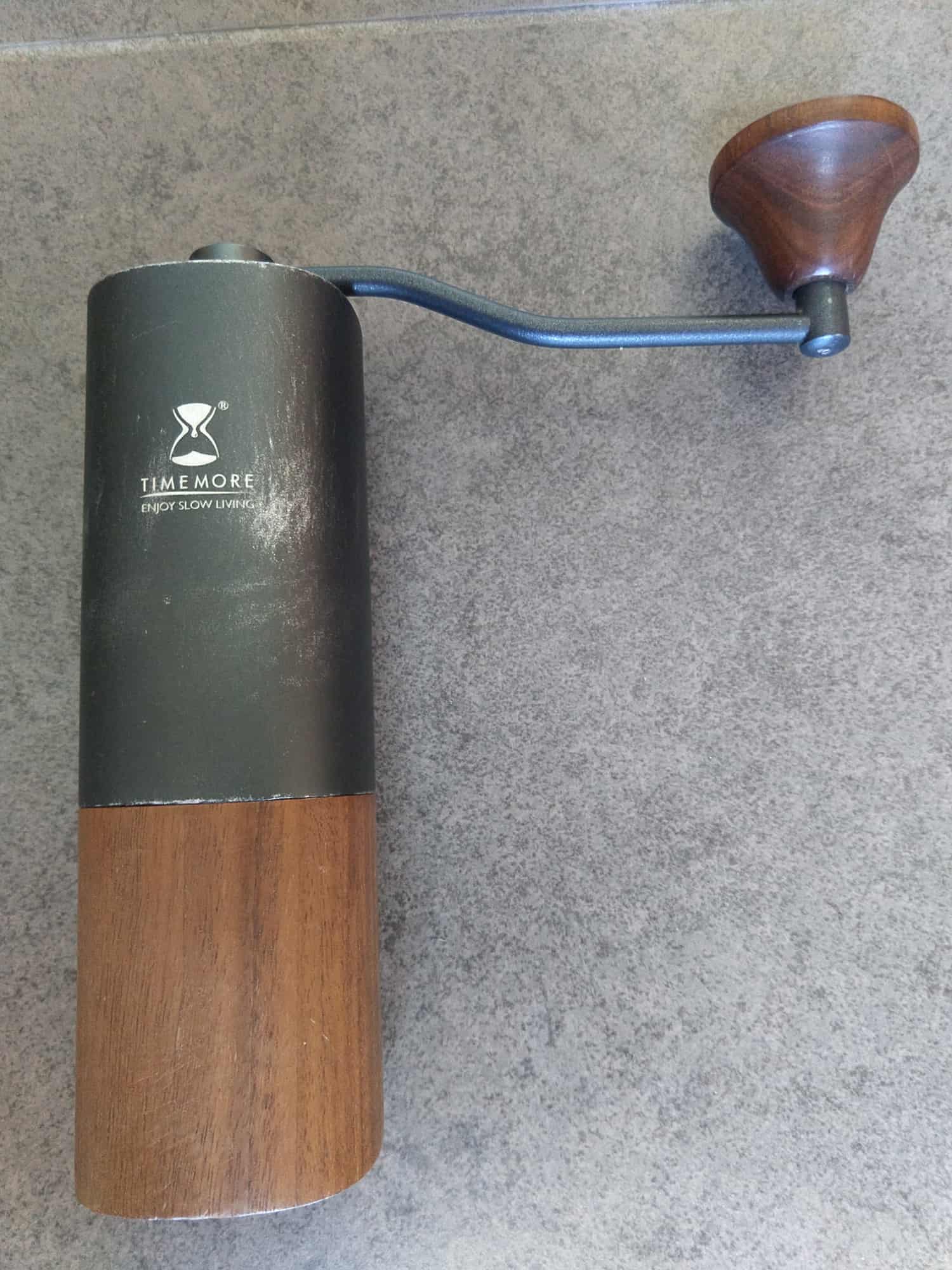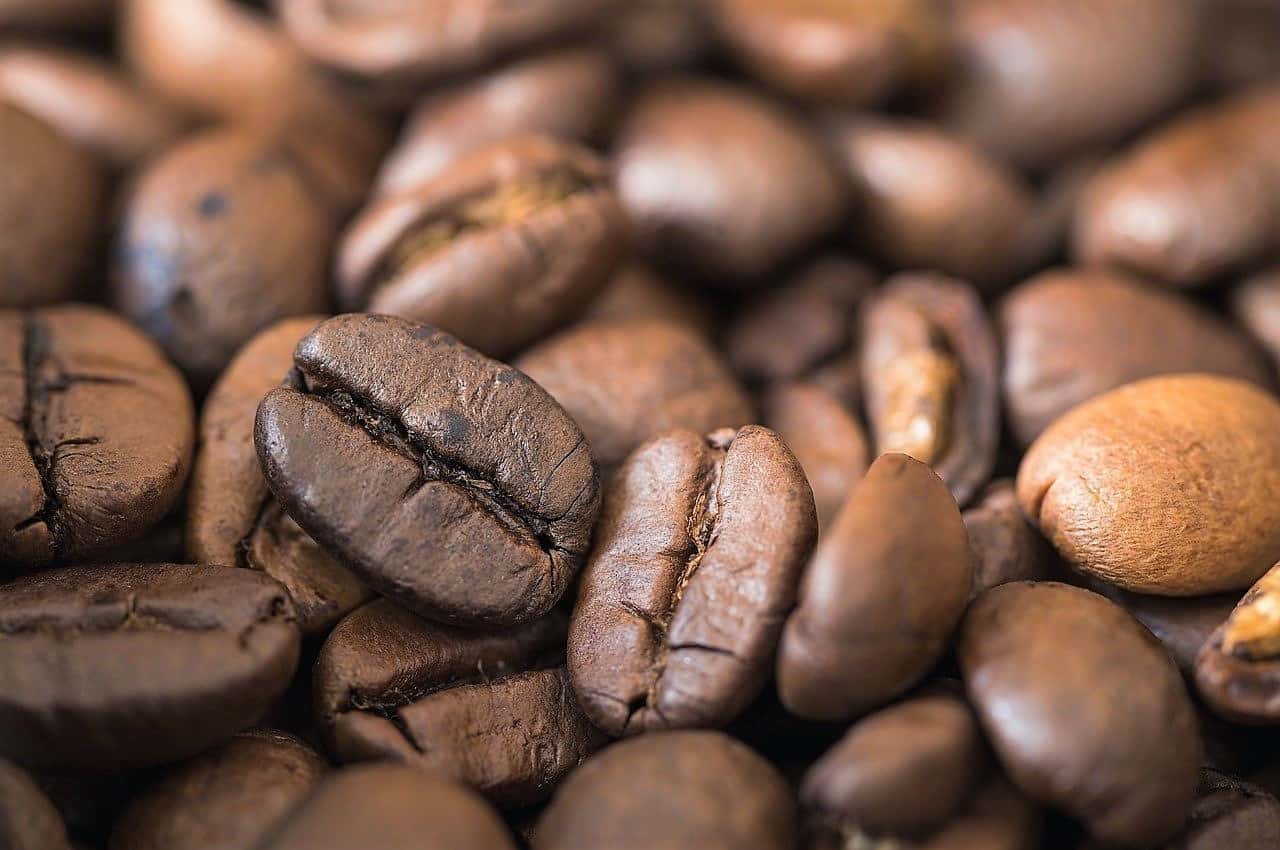Fresh Roast SR800 Review: The Best Home Coffee Roaster For Most Of Us
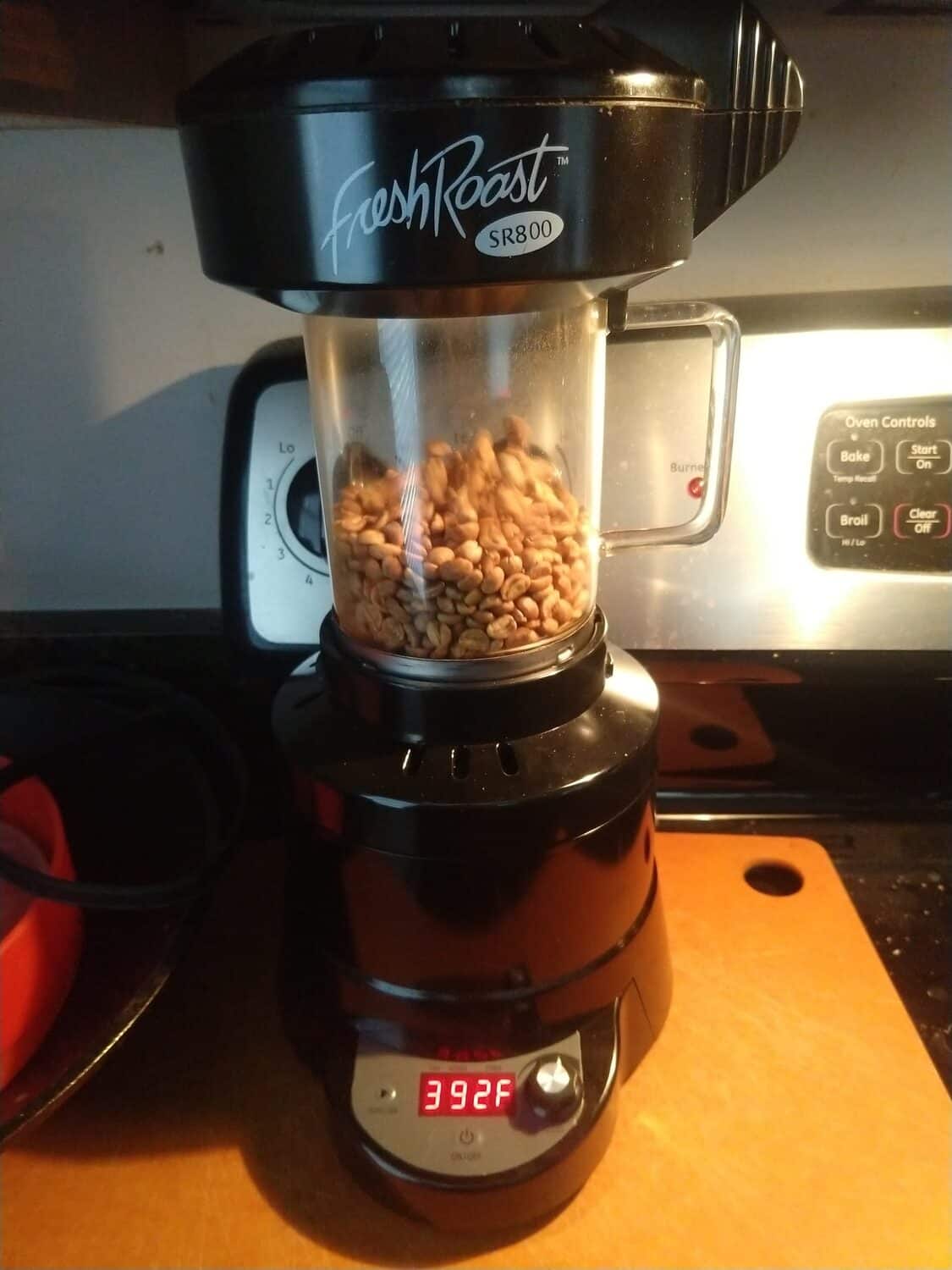
Roasting coffee at home is the best way to keep fresh, delicious beans on hand.
It's cost-effective, and perhaps better yet, it's a lot of fun.
After using different roasters over several years, I've found that the Fresh Roast SR800 (available here) is the best home coffee roaster for most of us. It isn't cheap, but it offers the best combination of control, batch size, and ease of use for small-scale home use.
Here, we'll cover what's great and what's not so great about the SR800. You'll also get some tips I wish I'd known from day one, so stay tuned.
Pros
- Minimal learning curve makes it easy to start
- Relatively large batch size saves time
- Great visibility while beans roast
- Seems durable enough to pay for itself many times over
- Good chaff collection for indoor roasting
Cons
- Expensive for an air roaster
- No smoke reduction, so a good range hood is important
- No built-in roast profiling or automated controls
- Unlikely to last as long as a drum roaster
I'm an affiliate.
I hope my product recommendations make your life a little better! As a member of programs including Amazon Associates, I earn from qualifying purchases. If you do choose to purchase though links here, then I greatly appreciate your support!
Why I Chose The Fresh Roast SR800
It's not a trivial purchase, so here's a quick note about how this specific roaster ended up in my kitchen.
My first "roaster" was actually a skillet. That was a lot of work for...not the best coffee.
Precise temperature control is everything in coffee roasting. Frying pans just aren't made with that in mind.
I upgraded to an air popcorn popper, then a stovetop one. They both helped, and I learned a fair amount.
But the air popper proved hard to control. Unless you're some sort of hobbyist electrician, it's simply an on/off device. The batches were annoyingly small, too.
The stovetop one was more controllable and allowed for larger batches. The thing is, cranking away for 15 minutes per batch gets tiresome. And it's still incredibly hard to gauge the temperature.
That led me to the world of dedicated, hobbyist-level coffee roasters.
Fresh Roast is the best-known name in its category. Granted, that's out of a field of about two. (Nesco is the only other comparable brand that comes to mind. I owned one and wasn't a fan of the small batch size and very limited power. But that's another story.)
Anyway, there are two current models:
- The SR540 has a batch size of about 4 ounces. (Click here to check the SR540's price).
- The SR800 has a larger roasting chamber (up to 8 ounces) with heavier-duty internal parts to heat and circulate all that coffee. (Click here to check the SR800's price.)
I opted for the larger SR800. It's roughly $70 more, as of writing, but doubling the batch size was worth it for me. Both are cheaper and more kitchen-friendly than drum-style roasters.
If you only drink a little coffee, or don't mind roasting multiple times per week, then the SR540 should be fine.
Everything below is based on the SR800, but (other than batch size) I imagine it also applies to its smaller sibling.
My Favorite Things About The Fresh Roast SR800
The point of roasters like the SR800 is to give you control without much complexity.
The manufacturer achieved that. If you're more or less new to roasting coffee at home, then here's what will stand out.
Beginners can hit the ground running
Sure, there are fully automated roasters (at much higher prices).
But as a beginner, it's important to be hands-on with the process. You'll botch a few batches, but that's the only way to learn!
You only need to do three things anyhow:
- Use the right amount of coffee (I find 7.5 ounces is ideal)
- Control the fan speed (always start on high)
- Control the temperature (again, always start on high)
(And, obviously, turn it off and empty it)
The batch size is a one-time thing, of course. That means fan speed and temperature are all that actually require attention.
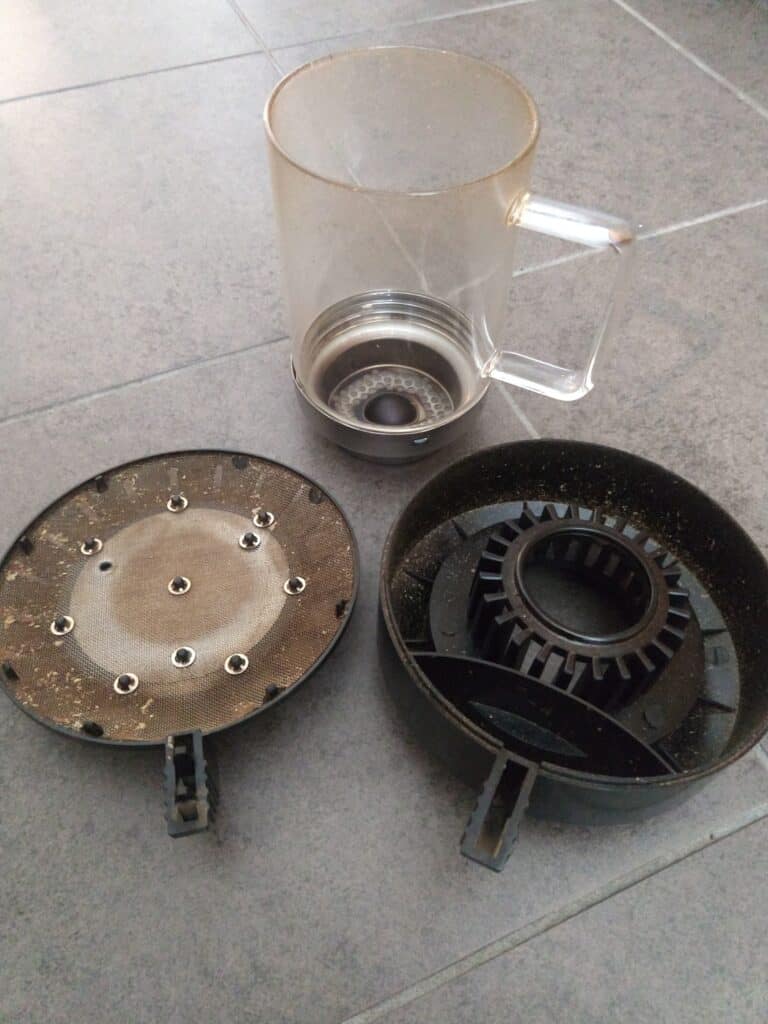
It's an efficient way to roast
Eight ounces of green coffee yields perhaps 6.5 ounces of roasted coffee per batch. That's perhaps 14 servings, depending on how you brew it and how strong you like it.
At two cups a day, you've got a week's worth of fresh coffee for about 20-25 minutes of effort--including set-up and clean-up.
Not bad!
It cuts roasting time almost in half compared to the smaller-batch SR540. Again, I think that's well worth the higher price.
And unlike a skillet or popcorn popper, you don't have to keep shaking and stirring the roaster as it does its thing.
All you have to do is look, listen, smell, and adjust the handy knob.
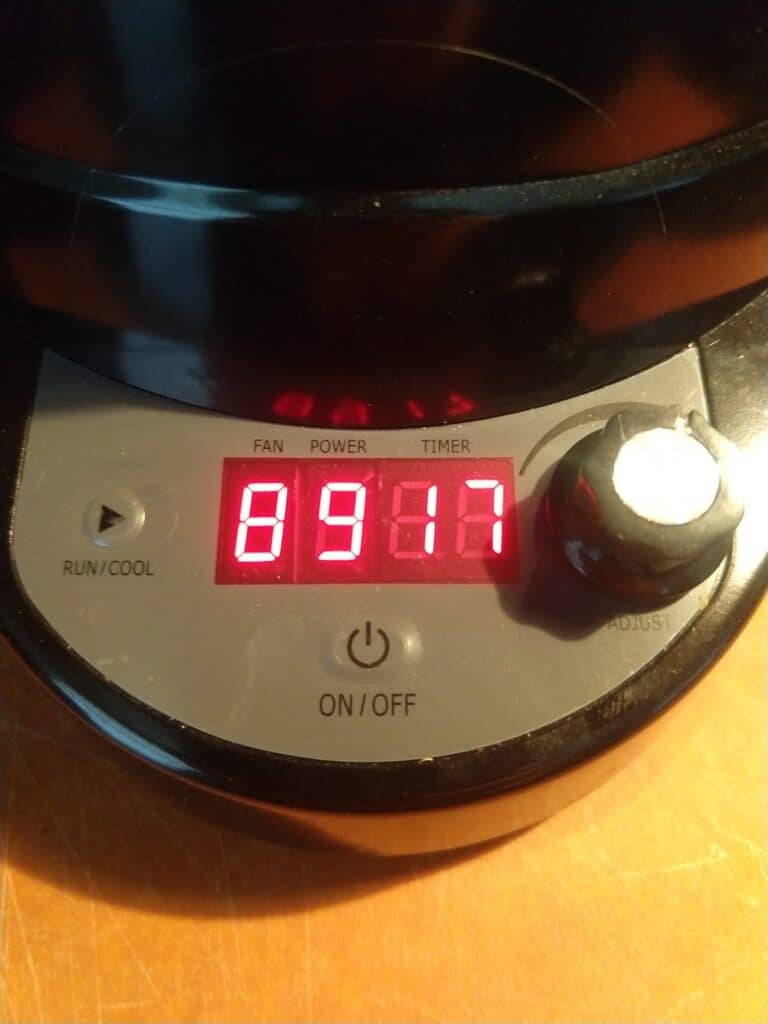
To be clear, do not walk away while roasting. The manual says as much, and it's actually important, not a generic legal CYA statement. Coffee beans get very hot, very quickly, and a kitchen fire is nobody's idea of fun.
(This is probably the part where I should remind you to have a fire extinguisher on hand. I've never even come close to a fire, but it's a good practice for the kitchen anyhow.)
It's easy to monitor the roasting beans
Speaking of keeping an eye on the roast, you'll find that easy to do.
The SR800 has a clear glass roasting chamber. You can actually see the beans changing.
That can be deceptive in later stages, where sound (cracking) and smell are equally important.
But it's valuable in earlier stages, as the beans dry out and circulate faster and change from green to beige to light brown. A clear line of sight helps you adjust the fan and/or heater to keep that process moving along.
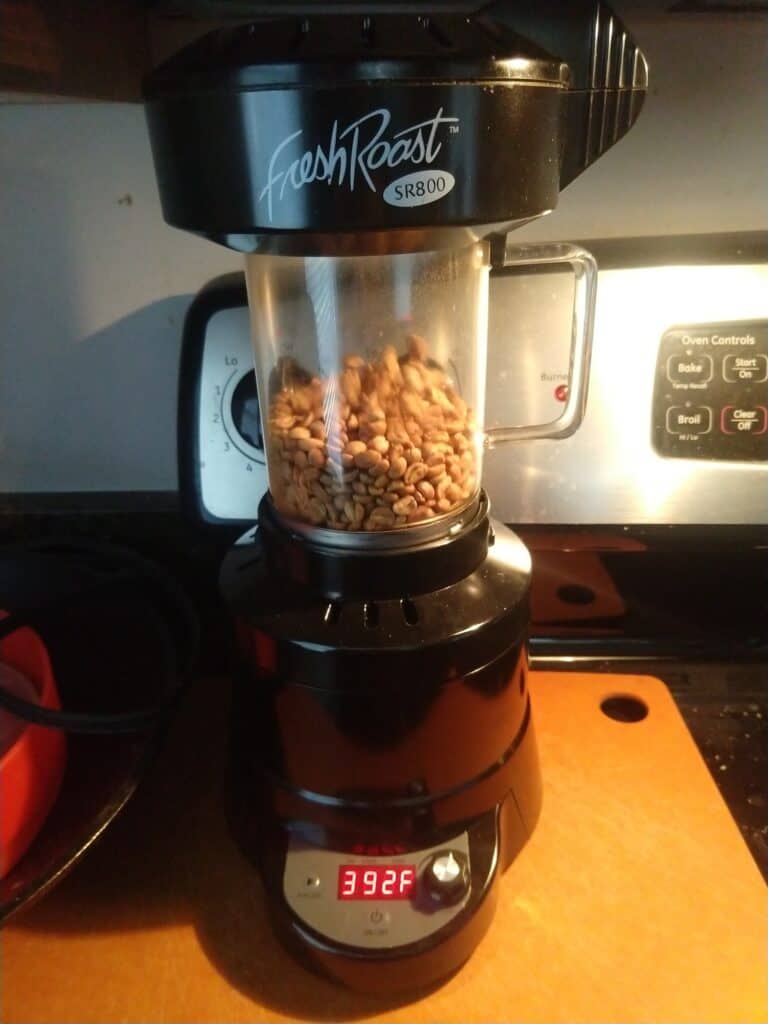
It's a cost-effective hobby
You can eventually save money by roasting coffee, but don't get into it just for that reason.
A pound of green coffee might run you around $6/lb shipped. It depends on the crop and on how much you're having shipped, but that's a reasonable number.
One pound green yields roughly 13 ounces roasted. A 12-ounce bag (the usual size) will run you about $16-$18 from good specialty roasters. It's easy to spend more, too, but we'll go with $16.
That means you save a bit over $10/bag by roasting on your own. After a couple dozen pounds, you'll have offset roughly the cost of the roaster. Past that point, it's all savings.
That's obviously not a life-changing amount of money. Your time is also worth something.
Still, that's not shabby, and it's great to have a useful hobby that pays for itself!
Chaff collection is surprisingly good
If you haven't roasted before, you might be surprised by the amount of chaff that roasting produces.
(Chaff is the dried husk of a coffee bean.)
Dealing with it can be an irritating part of home roasting.
Popcorn poppers and stovetop methods do absolutely nothing, so you're often left with a layer of clingy confetti around the kitchen. Not fun.
The Fresh Roast has a chaff collector built in to the top of the roasting chamber. It works significantly better than anything else I've tried.
The chaff collector isn't quite foolproof, but I'd estimate it catches more than 99% of the chaff that would otherwise cover my counter.
Just take care not to spill chaff out of the collector after you remove it. Chaff is very light and prone to floating around like dandelion seeds, so that's easier than you'd think.
Why You Might Think Twice About A Fresh Roast SR800
The Fresh Roast is simple, accessible, and capable.
But nailing all of those attributes requires a few trade-offs.
Personally, none of them are deal-breakers. But for you, they might be.
Here's what you should keep in mind before ordering one.
It's not a cheap way to start
The SR800 is around 25%-50% the cost of more robust drum roasters for home use. And it's like 1% of the cost of a modest commercial roaster.
Keep that in mind.
At the same time, it's also about 5-8x the cost of suitable popcorn poppers. Now, those are inconvenient and hard to control. But if you're totally new to the home roasting hobby, and are on a tight budget, then start out cheap.
There isn't much of a resale market for used, high-temperature electronics. Consider the Fresh Roast a sunk cost, whether you use it for a day or a decade.
You need to deal with the smoke
I mentioned above that the chaff collector is effective.
That's absolutely true, and a nice improvement over just about every alternative roaster.
But the one thing the Fresh Roast doesn't do?
Suppress smoke.
The volume of smoke that coffee roasting generates can come as a surprise. Suffice to say that I've set off a smoke detector or two.
And without something like a catalytic converter, all you can do is find a way to ventilate.
Fortunately, even our low-end vent hood does the trick. As long as I position the roaster directly under the fan, and keep windows open, smoke is negligible.
Your mileage may vary, though.
If you cannot ventilate it, then consider roasting outside when the weather permits. Ambient temperature and humidity do affect the roast, though, so this still isn't ideal.
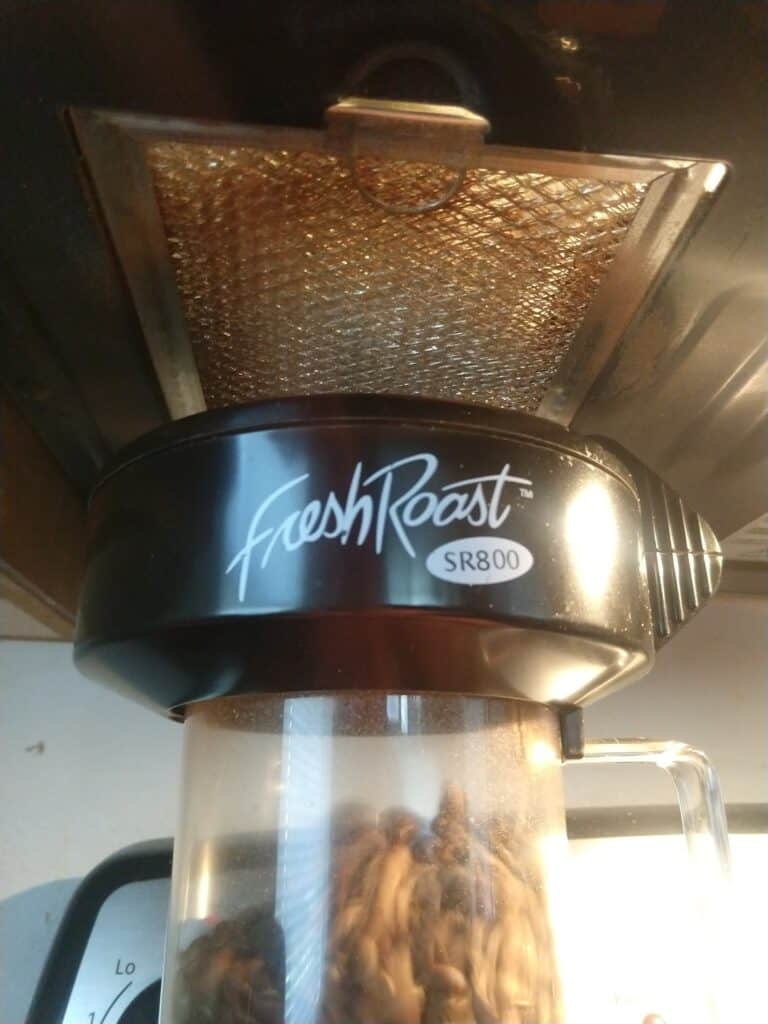
It's definitely not foolproof
Even though it looks and feel like a set-it-and-forget-it package, you can easily mess up a batch (or likely several batches) before getting them right.
To be fair, that's just the general learning curve and not specific to the Fresh Roast.
But understand that if you want a truly foolproof roaster, you'll need to look elsewhere and spend at least 5-10x more.
At those price points, you're not in it for the cost savings. If you really want to avoid trial and error, then you're better off just buying from great specialty roasters. (Speaking of which, Angels' Cup is a fun way to find ones you might not have known about. If you're curious, I've reviewed it here.)
It won't last forever
Finally, this isn't a gas-heated drum roaster that can chug along for decades.
By analogy, it's more like a toaster oven than a commercial baker's oven. A consumer appliance, plain and simple.
What's a realistic lifespan? I have no idea.
But mine is still going strong after many dozens of batches, and the manufacturer does include a one-year warranty.
For someone who normally buys one bag of specialty coffee every couple weeks, that year is essentially the break-even period on the roaster. Even if it died on day 366, it's still not a bad deal!
Quick Tips To Get Great Coffee From Your Fresh Roast SR800
You'll learn plenty of tricks as you go, and that's part of the fun. Home roasting is practical, but it's also a hobby, and great for experimentation.
The more you embrace those aspects, the more fun it gets.
Still, a few tips will get you off to a better start, sooner. Here are my top four.
Don't quite max out the batch size
Although you can use 8 ounces of green coffee, it's best to keep it around 7.5.
I've tried both volumes several times, and consistently get more developed, complex roasts with just a bit less than the max capacity.
My guess? When it's too full, the fan can't circulate the beans well enough at first. That leaves many of them a little underdeveloped and/or "baked"-tasting by the end.
Use fan speed to adjust heat
The funny thing about the power (heat )control is that I don't actually use it.
I set it to max (9), and later the cooling cycle automatically turns the heat off altogether.
Rely on fan speed instead, since it has an immediate effect that is easier to observe.
You know how a warm day suddenly feels cool when a breeze comes? It's the same thing inside your Fresh Roast. Turning up the fan disperses heat, so higher fan speed reduces the effective heat that beans are exposed to.
That's my theory, anyhow.
The beans circulate faster as they dry out and get less dense, so you need to reduce the fan every couple minutes (give or take) to keep them from flying around the roasting chamber and effectively stalling out. That leads to a paper, "baked" taste.
As long as they keep circulating smoothly, but not intensely, you're probably on the right track.
As with everything else in coffee roasting, just try it and see.
Turning it off doesn't quite stop roasting
When you end a roast, the beans are often more than 420F.
And if you quickly turn the control knob clockwise, you'll see that the air temperature might be 450F or even higher.
That is hot.
The Fresh Roast's cooling cycling is effective, but it still takes at least a couple minutes of cooling before roasting actually ends.
The point? If you run the heat right up until you think the roast is finished, you'll probably overshoot.
With practice, you can guess when it's about 30 seconds shy of perfection. And that is when you should generally hit the cooling cycle.
Roast the same beans a few times in a row
We've covered some major variables in how you use the roaster.
But the beans themselves have quite an impact, too.
For instance, bean density affects the rate of drying and heating. Density varies a lot between different crops, let alone different origins and varietals.
Let's say you followed identical roasting steps with identical weights of Coffee A and Coffee B. It's entirely possible that one will taste perfect while the other is disappointing.
With practice, you'll get better at improvising. But as a beginner, it's important to roast several consecutive batches of the exact same crop. Otherwise, you're dealing with too many variables at once.
By the way, this isn't specific to the SR800. It applies to every hands-on roaster on the market.
So embrace the trial and error, adopt a slightly scientific mindset, and you'll be surprised at how soon you're roasting excellent coffee!
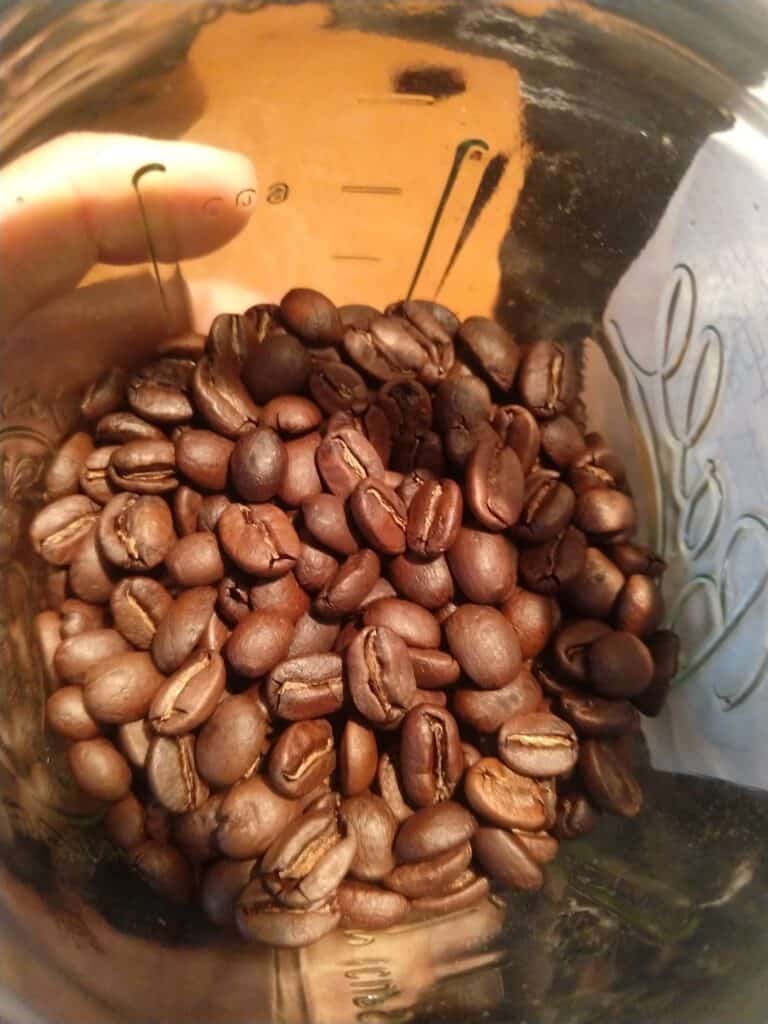
Is The Fresh Roast SR800 Right For You?
The Fresh Roast SR800, and the smaller SR540, is beginner-friendly but offers enough control to satisfy more experienced roasters.
If you want to be engaged in the roasting process, and have at least a little cash to spare, then a Fresh Roast is the right starting point.
It's the best blend of efficiency and compact kitchen-friendliness I've found.
On the other hand, it's not the best choice if you'd rather not interact with the roasting process. There are also cheaper ways to try home roasting, but most are harder work and/or far less consistency.
Speaking as an enthusiast (but not an expert) with limited space and a taste for fresh specialty coffee, the SR800 was the right choice. Mine isn't going anywhere.
P.S. You can easily find both the SR800 and the SR540 on Amazon. That's probably the quickest delivery and easiest returns.
